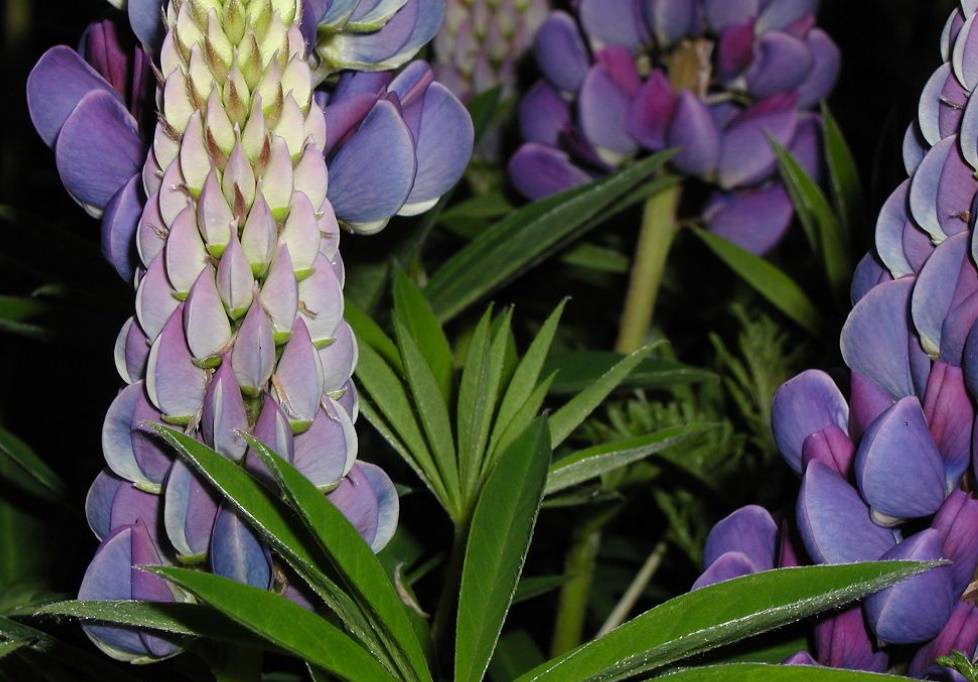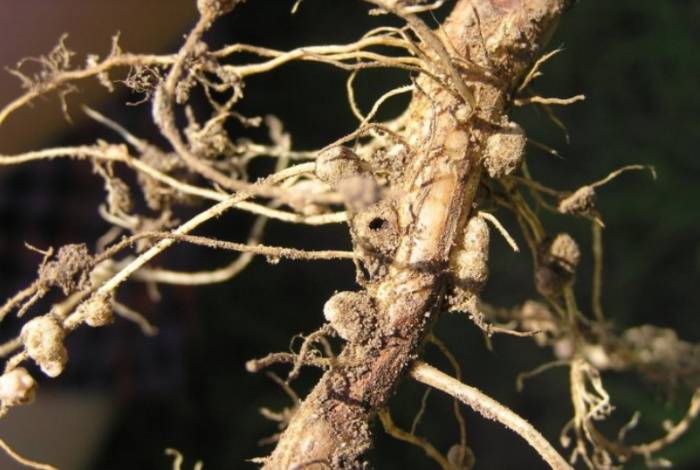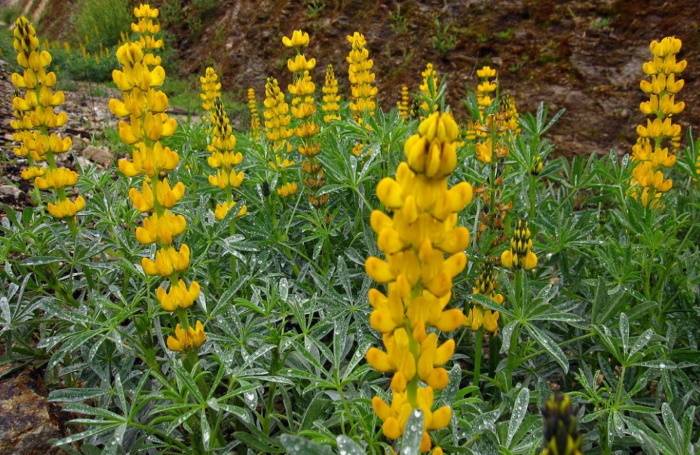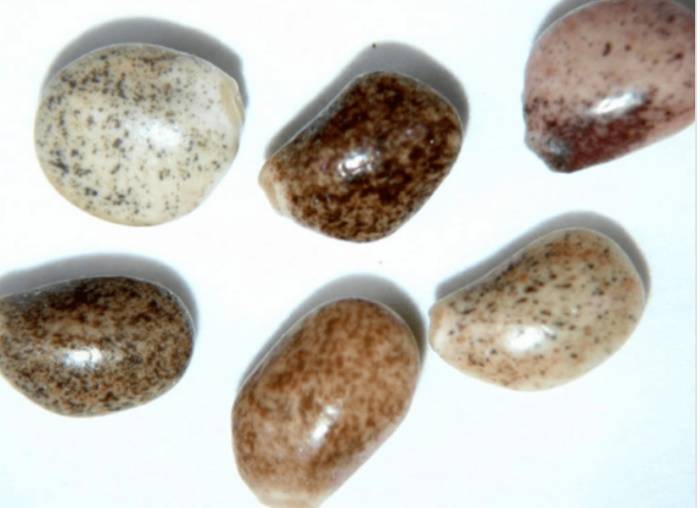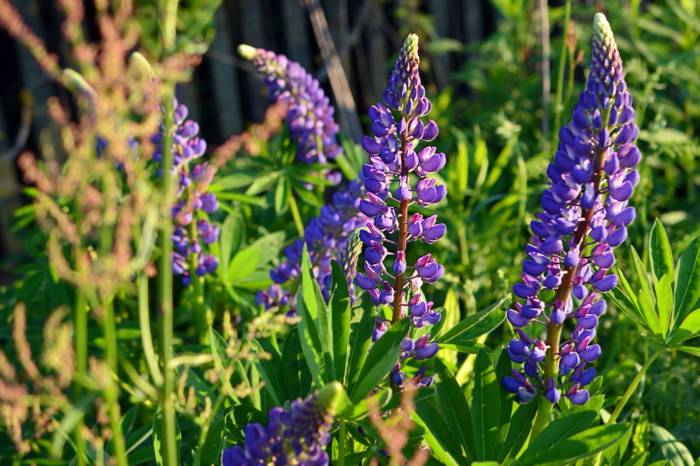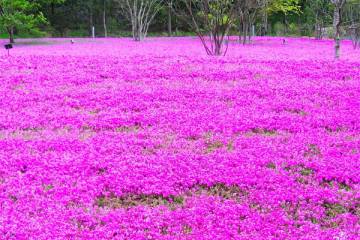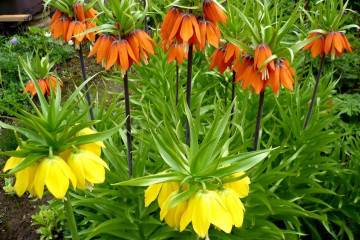Lupine as a siderat - when to sow and when to bury
Content:
The green manure process is plowing into the soil of green fertilizers obtained from specially grown herbaceous plants. It has a long history. Even in ancient Rome, soil fertility in vineyards was improved through the cultivation of legumes. This method is used now. One effective green manure is lupine (Latin Lupinus), a herbaceous legume annual that many people know as a perennial garden plant grown to decorate flower beds.
The benefits of lupine for the garden
The active use of the cultivated area for the cultivation of vegetable and horticultural crops leads to the depletion of the fertile layer. Plants take the substances they need from the soil; a new supply of micro- and macroelements occurs in several ways. The main ones are the introduction of mineral fertilizers by humans and the decomposition of organic substances, including green manure plants.
Siderata are actually green fertilizers consisting of residues of substances accumulated in plant tissues. Green fertilizers include annual lupine - an unpretentious plant with large leaves and beautiful inflorescences. In its aboveground part, it builds up a large amount of green mass, in which alkaloids, tannins, amino acids, flavonoids, fiber, macro- and microelements are found.
The root system of lupins has a branched structure, the central core penetrates into the deep layers of the soil. Under the influence of green manure roots, the mechanical structure of the soil is improved. Root canals are created through which surface moisture and air can enter the fertile soil area. Dead plant roots remaining in the depths of the soil, as well as lupine compost made on the surface of the earth, become a source of nutrition for worms and microorganisms that live near organic debris.
Many gardeners have long known lupine as a siderat - when to sow and when to bury its green stems and leaves, they also understand. Therefore, its popularity and demand is increasing. The peculiarity of plants is that vegetative development takes place very quickly. Already after 50-80 days from the moment the first shoots appear, the plants grow their green surface part, which can be mowed and embedded in the soil. Burying in moist soil will accelerate the decomposition of organic matter.
What soils need planting lupine
The beautifully flowering Lupinus is suitable for cultivation in uncultivated areas of land, useful for poor and depleted soils. Due to the macro- and microelements contained in its roots, stems and leaves, the soils on which lupine is used as green manure are saturated with substances necessary to increase the level of fertility. This is nitrogen, phosphorus, and calcium. The substances that make up plant fibers deoxidize soils with a pH level below the "7" index, turning them into neutral ones. Most garden crops are planted on neutral soils.
What crops should be planted annual lupine
Not a single horticultural cultivated plant can develop from seed into an adult form without nitrogen and phosphorus. It is not without reason that these substances are referred to the group of macroelements, because without their participation, the separation of plant cells is impossible. Lupine green manure is capable of transferring up to 20 g of nitrogenous compounds in 1 m² of soil. Most often, this type of green manure is used in the beds intended for growing tomatoes, cucumbers, peppers, strawberries, potatoes, green herbs.
Lupine will increase the yield of berry bushes, cereals. Sowing lupine in areas where legumes will then grow is not allowed. Plants belong to the same family, suffer from common pests and pathogens that accumulate in the arable layer of the soil and have a destructive effect on plants.
What varieties of lupine are suitable for the role of green fertilizer
Annual lupins are used as green manure plants. They build up significant green mass and an extensive root system in a very short time. About 10 species of annual plants are grown as cultivated plants. Some of them are decorative.
For sideration, the following types are used:
- Lupine Narrow-leaved Blue (Lupinus angustifolius) - refers to alkaloid lupines, contains the alkaloid lupinine, grows up to 1.5 meters in height, the tops of the stems are decorated with bright purple, pink, white inflorescences in the form of pointed candles, frost-hardy.
- Lupine Yellow (Lupinus luteus) - grown only as a green manure with a dense leaf mass, has a fast growth rate, bushes up to 90 cm high, does not tolerate shading and drought, develops well on neutral sandy soils.
- White siderata lupine (Lupinus albus L.) is a well-known agricultural crop, used as a fodder and green manure plant, the level of alkaloids in plant tissues is the lowest among alkaloid species; 6 varieties of this species are included in the Register of Breeding Achievements of the Russian Federation.
- Annual lupine Belozerny is an early maturing species with beautiful flowering, highly productive, has average yields 15% higher than other types of green manure lupines.
How to grow lupine as a green manure
To get high-quality green manure, you need to comply with certain requirements for planting and caring for the plant.
Sowing dates
It has been established that lupine green manures bring great biological benefits when sown in late summer - early autumn, if long warm autumn months are established in the region. Lupine seedlings will withstand temperatures down to -4 ºC. You can sow seeds after harvest on those plots of land where crops are planned for which lupins are good predecessors.
Lupine seeds will germinate one to two weeks after entering the soil and before the onset of frost they will have time to develop to the stage of budding. It is at this time that the largest number of nodule bacteria is on the roots of the green manure.
Plants are mowed and left as mulch on the surface of the soil, and then in the spring they are embedded in the soil, or the green parts of the green manure are immediately buried.
Sowing methods
In advance, grooves are made in the soil, and then, after freezing of the surface layer, the beans are laid out. Sprinkle with pre-prepared dry soil, cover with plant residues, if necessary, insulate with foil.
In the spring, when warm days come, the film is removed, the mulch is removed.The seeds germinate quickly, and the plant enters the stage of technical ripeness by the beginning of June. The advantage of such sowing of green manure is that in the spring time is no longer wasted on sowing, the soil after snow melting and thawing is saturated with moisture for a long time.
Spring crops are carried out as early as possible, as soon as the weather allows you to enter the garden. Seeds are sown to a depth of 5 cm, on sandy soils, the planting depth is increased to 8 cm. Lupine beans germinate at a temperature of + 5ºC. Before the start of planting of cultivated plants, the roots of lupine will stretch to the entire depth of the arable layer and take nutrients from the lower layers.
Mowing time
Siderata must be mowed in time; buds must not be allowed to bloom. They mow in cloudy weather, or early in the morning. After mowing, the plants are crushed and left on the soil surface. Thick stems are not buried in the ground, they are sent for composting. If the ground is dry, the tops of the lupins are watered and sprinkled with soil.
Basic rules of care
For active growth and rapid vegetation, lupins need slightly acidic or neutral soils. In alkaline lands, instead of a luxurious tall, spreading flower, a small, weak plant with several leaves will grow. Therefore, before sowing lupine green manure, it is required to determine the acidity of the soil.
At the very beginning of the growing season, plants can drown out weeds. But Lupinus are gaining strength very quickly and will soon begin to rise above any weeds themselves. The advantages of green manure lupins are that they are sown densely, the seedlings sprout amicably, quickly gaining strength. Especially at a time when there are light rains and the soil does not dry out. Excess moisture can lead to root rot.
In dry weather, the seedlings of green manure will need watering. Mature plants will be able to take care of themselves. With their long roots, they will get water from the moist layers of the soil. Just like nutrients. Therefore, gardeners think little about how to feed lupine, because only young plants will need feeding.
The main problems when growing lupine as a siderat
Lupine, like any plant, can get sick and be attacked by pests. There are other problems when growing it.
Soil acidity
If the plants do not develop well, a possible cause should be established. The main one is often unsuitable soil acidity and a very dense structure. Acidity is determined either by laboratory tests carried out by specialists, or independently. The first option is the most reliable, but expensive and not always available.
You can independently make an assessment of acidity by those plants, which are many on the site. Sorrel, moss, horsetail grow well on acidic soils. Neutral soils are suitable for snow, clover, nettles. For quinoa and field mustard, slightly alkaline soils are needed.
More precisely, the level of acidity is independently determined using a litmus indicator in the form of strips of special paper. A strip is placed in a water settled extract from the ground and it is determined in what color it is painted. For lupins, it will be very good if the color of the strip turns yellow-orange (the soil is slightly acidic) or yellow-green (neutral).
Lupine diseases and prevention
Lupins can suffer from fungal diseases.Fungal spores are very light and volatile, carried by the wind, and can be carried on the hands of people and on garden tools. Prevention of diseases will be pre-sowing treatment of seed with means of fungal infections. The market for means of combating green manure diseases offers preparations - seed dressing agents "Vitaros Maxim", Divident Star ".
Lupinus crops can die from bacterial, brown, blackish spot, root and gray rot, leaf mosaic, fusarium wilting. All these diseases cause significant crop shortages. It is possible to strengthen the immunity of plants and prevent pathogens from penetrating into plant tissues during the growing season with the help of Amistar Extra and Rajok fungicides.
Frequent pests
Siderat seedlings suffer from pests, the larvae of which overwinter on plant debris and in the soil. These can be sprout flies, caterpillars of gnawing scoops, gray and bristly weevils. The presence of weevils on the lupine, the caterpillars of the scoop are given by the eaten leaves. Sprout flies feed on germinating seeds and seedlings.
Among the professional drugs, the Tabu disinfectant is the most effective. In the description of the drug it is indicated that the active substance penetrates into the seeds, after their germination passes into the roots, and then, as the ground part grows, it moves into the stems and leaves. Insects feed on plant fibers and die under the influence of poison. During the period of growing green mass, plants are treated with insecticides "Vantex", "Tibor", "Lannat", "Clotimet".
Gardeners, unfamiliar with all Lupinus species, believe that it is unsafe to plant these plants in the beds, because they are able to scatter seeds uncontrollably, to capture new areas with rhizomes. But this applies to perennial plants that usually grow in flower beds, decorate front gardens. Lupins siderates in the garden can only be beneficial, if, of course, all the features of their cultivation are taken into account and the plants are provided with the necessary care.
